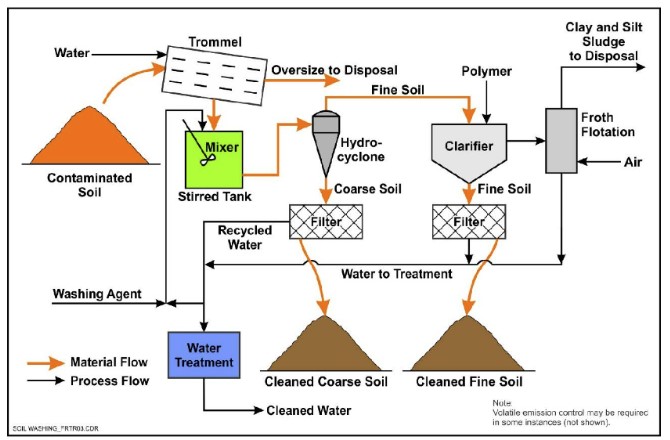Cutting-edge PFAS Treatment Solutions for Safer Water
The increasing prevalence of PFAS contamination in water materials demands a crucial examination of cutting-edge treatment solutions. Advanced filtration technologies and unique chemical therapies present encouraging avenues for minimizing these consistent toxins. In addition, emerging bioremediation methods offer a more lasting method to tackling PFAS difficulties. As regulative frameworks remain to adapt, understanding the efficiency and scalability of these solutions ends up being paramount. What effects do these developments hold for public health and ecological remediation, and how can stakeholders effectively execute them in diverse contexts?
Review of PFAS Contamination
PFAS contamination has actually arised as a substantial environmental and public health and wellness worry. Per- and polyfluoroalkyl compounds (PFAS) are a team of synthetic chemicals recognized for their persistence in the setting and human body, leading them to be typically referred to as "for life chemicals." These compounds have actually been extensively utilized in numerous markets, including firefighting foams, water-repellent fabrics, and food packaging, mostly because of their water- and grease-resistant residential or commercial properties.
The prevalent use PFAS has actually resulted in their detection in soil, water products, and also in the blood of human beings and pets. Researches have actually connected PFAS direct exposure to many health issues, consisting of developing effects in babies, immune system disorder, and various forms of cancer. Furthermore, the ecological determination of these substances complicates their destruction and removal, elevating concerns concerning long-lasting ecological impacts.
Regulative bodies are progressively carrying out rigid standards to keep track of and minimize PFAS degrees in alcohol consumption water and various other environmental mediums. As awareness of PFAS contamination expands, it has actually ended up being vital for neighborhoods and markets to seek efficient therapy remedies to alleviate direct exposure and protect public health and wellness.
Advanced Purification Technologies
As the urgency to deal with PFAS contamination heightens, advanced filtration technologies have actually become a pivotal component in the removal efforts targeted at removing these consistent chemicals from water sources. These innovations utilize innovative devices to successfully target and record PFAS compounds, which are notoriously resistant to traditional therapy approaches.
Among one of the most promising techniques is using granular turned on carbon (GAC), which adsorbs PFAS particles due to its high area and porous structure. This method has actually been extensively implemented in both local and industrial settings, demonstrating substantial decreases in PFAS concentrations. Additionally, ion exchange resins have obtained grip, specifically developed to precisely bind PFAS ions from water, therefore facilitating their removal.
Membrane purification technologies, such as reverse osmosis and nanofiltration, additionally reveal efficacy in PFAS removal by physically separating contaminants from water - pfas management. These systems can accomplish high degrees of purity, making them ideal for drinking water applications
Chemical Therapy Developments
Many chemical treatment developments are being checked out to efficiently deal with PFAS contamination in water materials. One encouraging method includes making use of advanced oxidation processes (AOPs), which make use of effective oxidants such as ozone, hydrogen peroxide, or chlorine dioxide integrated with UV light to break down PFAS substances into less harmful compounds. This method has actually demonstrated efficacy find out in lab setups, showing prospective for scalability in real-world applications.
One more innovative strategy is the advancement of ion-exchange materials particularly developed to target PFAS. These materials can uniquely adsorb PFAS substances from water, enabling for their removal throughout therapy procedures. Recent innovations have actually improved the performance and capability of these materials, making them a beneficial choice for water therapy facilities.
Furthermore, researchers are exploring using chemical agents like persulfate and ferrous ions to improve the deterioration of PFAS in infected water. These representatives can induce chain reaction that facilitate the failure of persistent PFAS compounds.
Emerging Bioremediation Methods
Current innovations in chemical treatment developments have actually led the way for discovering bioremediation techniques as a sensible alternative for attending to PFAS contamination. Bioremediation uses the natural metabolic procedures of microbes to weaken or change pollutants, making it an enticing technique for taking on persistent pollutants like PFAS.
Emerging techniques in bioremediation consist of using genetically engineered microorganisms that can especially target and break down PFAS substances. These microbial stress are being established for their boosted degradation capabilities, increasing the efficiency of the removal process. Additionally, scientists are checking out the capacity of plant-assisted bioremediation, where specific plant varieties might uptake and withdraw PFAS from infected soil and water.
An additional appealing strategy is the application of bioaugmentation, which involves presenting advantageous bacteria into contaminated atmospheres to enhance the destruction of PFAS. This technique can help with quicker remediation timelines and improve overall performance.

Governing Structures and Standards
A detailed regulative framework is important for properly managing PFAS contamination and making certain public wellness security. The enhancing recognition of per- and polyfluoroalkyl substances (PFAS) as environmental toxins has actually triggered different federal and state visit their website agencies to develop standards that regulate their presence in water materials. The U.S. Environmental Defense Company (EPA) has actually developed health and wellness advisories and is pursuing establishing enforceable restrictions for PFAS in alcohol consumption water.
State-level policies vary considerably, with some states taking on more stringent standards than those proposed by the EPA. These guidelines often include optimum pollutant degrees (MCLs) for certain PFAS compounds, tracking demands, and reporting obligations for water utilities. In addition, emerging frameworks concentrate on the removal of infected websites, highlighting the requirement for efficient treatment technologies.

Final Thought
In verdict, the development and application of cutting-edge PFAS therapy services are essential for resolving the pervasive issue of water contamination. Advanced filtering technologies, chemical treatments, and emerging bioremediation strategies jointly offer a multifaceted strategy to efficiently minimize and weaken PFAS levels. As regulative frameworks remain to evolve, integrating these innovations will be necessary to secure public wellness and recover the stability of polluted water sources, ultimately adding to a cleaner and much safer setting.